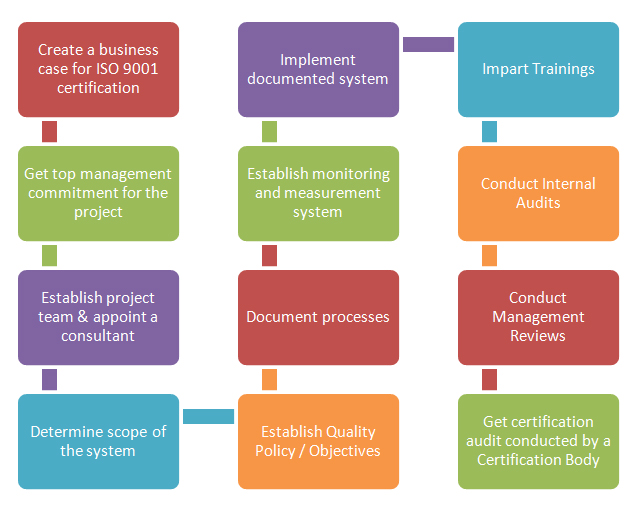Benefits
The benefits that an organization may get out of the application of ISO 9001 and its certification are mostly based on the management’s intentions of selecting this standard. However, following examples provide some direction about what the ISO 9001 can give the organizations in terms of its benefits
“It is our practice to understand the benefits that our customers want by applying ISO 9001 and then design the system in a way to help the organization to realize these benefits”.
An ISO 9001 certified organization is considered to be more reliable than the other similar organizations that are not certified. The certification is globally accepted and is gained by large as well as small organizations hence bring an equality in terms its positioning of brand reliability per say. The certification adds up to the brand recognition.
There are many organizations who give preference to ISO 9001 certified suppliers. For example, in India, most Government Organizations prescribe ISO 9001 certification as one of the pre-qualification for bidding to their tenders. So, if your organization is certified to ISO 9001, you may be able to bid for many tenders that specify such criteria. If your organization operates in a developing country, then your opportunities for exporting your product/ service to customers from developed countries increase since these customers invariably demand such certification. Non-certified organizations lose out on such opportunities. The certification to ISO 9001 gives a competitive advantage.
The criteria prescribed by the ISO 9001 standard requires organizations to develop processes that bring consistency in operations. The continual improvement efforts are mostly focused towards building efficiency in these processes. Over a period of time the organization witness improvement in the consistency within the business processes as well as the overall efficiency.
Interested parties of an organization include its customers, owners, employees, suppliers, bankers, etc. All these have certain expectations in terms of the performance of the organization. Due to the improved consistency of the organization after application of ISO 9001 based quality management system, the organization performance becomes more and more reliable. As a result the trust level and confidence of all these interested parties get a boost.
The need to improve demands careful monitoring and analysis of errors, deviations within the processes of a quality management system built with reference to ISO 9001 requirements. Most organizations do not realize but such errors and deviations cause financial losses due to its direct or indirect impact. After application of ISO 9001 based processes for corrective / preventive mechanism, the errors / deviations reduce considerably thus giving a lot of cost savings for the organizations.


